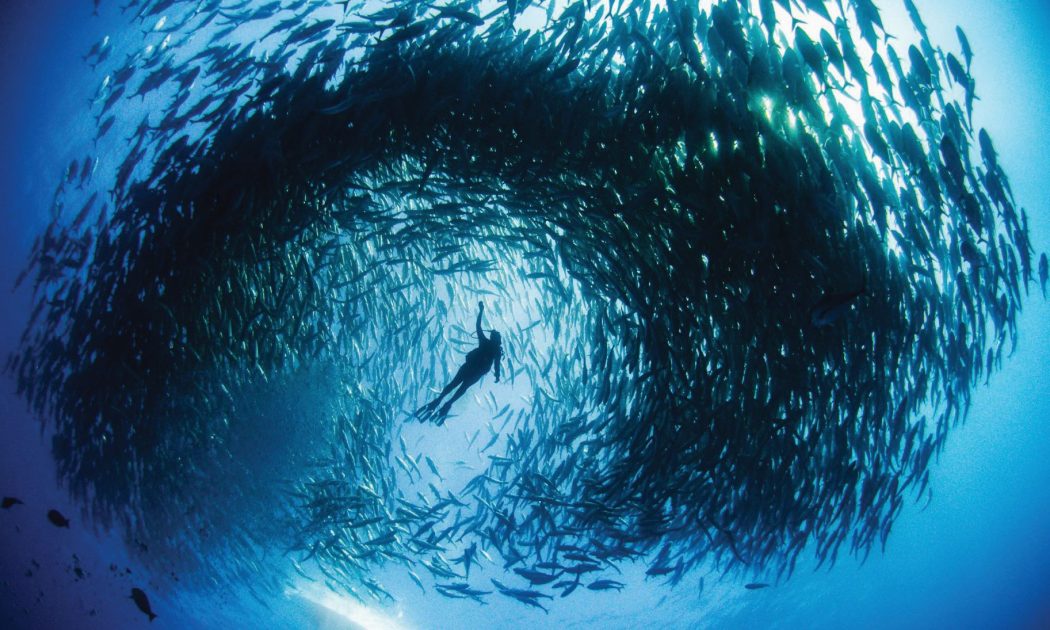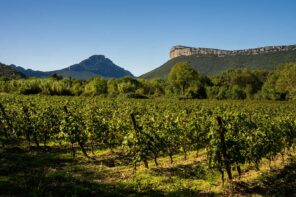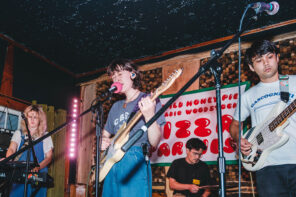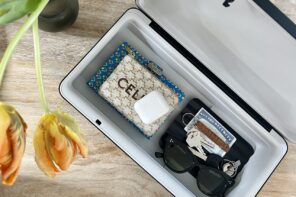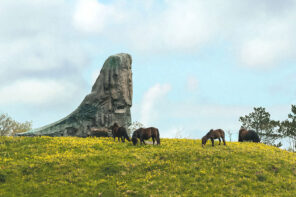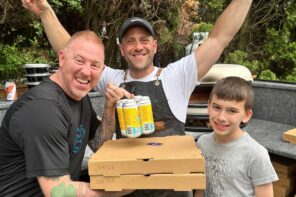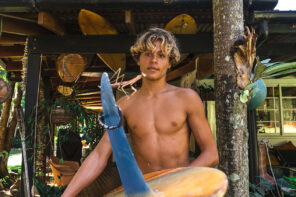Before we introduce Dr. Sylvia Earle, if you happen to be reading this in a crowded room, or in a room with even just one person, it would be appropriate to politely ask them to kindly stand up and clap in an enthusiastic and appreciative manner while you’re reading this introduction of Dr. Earle—it’s the least you and they could do.
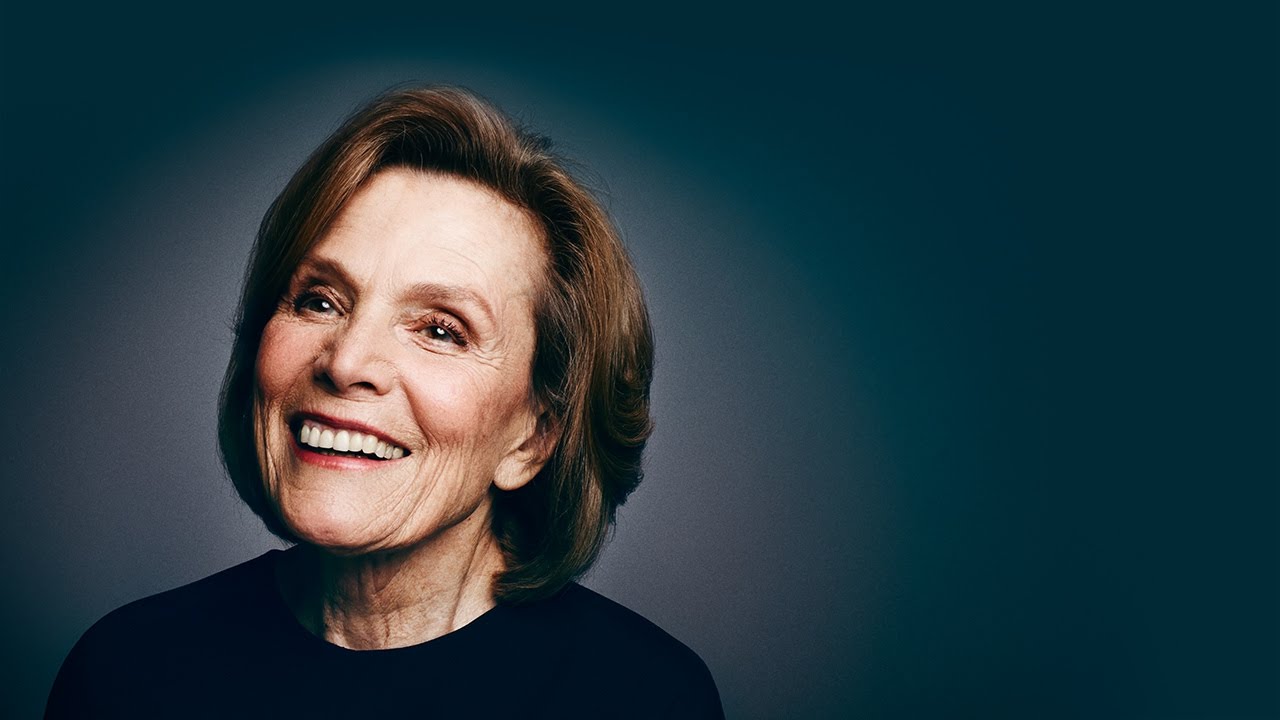
Whalebone Magazine: We watched an interview where you reminisced about a moment when you were 3 years old and were knocked over by a wave, and in that moment your mom had two options, to pick you up right away or see what happened and let you go. Do you think there’s a reason why that one memory stayed around more than others perhaps in your childhood? And is that still fresh in your mind?
Dr. Earle: I love that memory. It was my first real contact with the ocean that I remember. I remember many trips that we made to the coast of New Jersey, but that one was, as far as I know, my first contact. It’s like your first dive or your first kiss or your first whatever. It sticks with you, because you’re experiencing something that touches everything you are. And my first reaction to not being able to breathe was feeling a little scared, but when my toes touched the sand and I could pop my head out and look around, I just found that to be exhilarating, not frightening. And my mother, I think saw the big smile on my face and realized that I was not in danger, was having a good time, so why instill a sense of concern and fear by snatching me out of the water.In fact, my parents through my childhood gave us, my brothers and me, by today’s perspective, remarkable freedom to be on our own. We were surrounded in our home in New Jersey, it was a little farm, about 10 acres, but 10 acres connected to a lot of woodland and so my kingdom, if you will, was much larger than just where we had our name on the ground. So, we had the freedom to go out and play in the pond or wander through the woods.
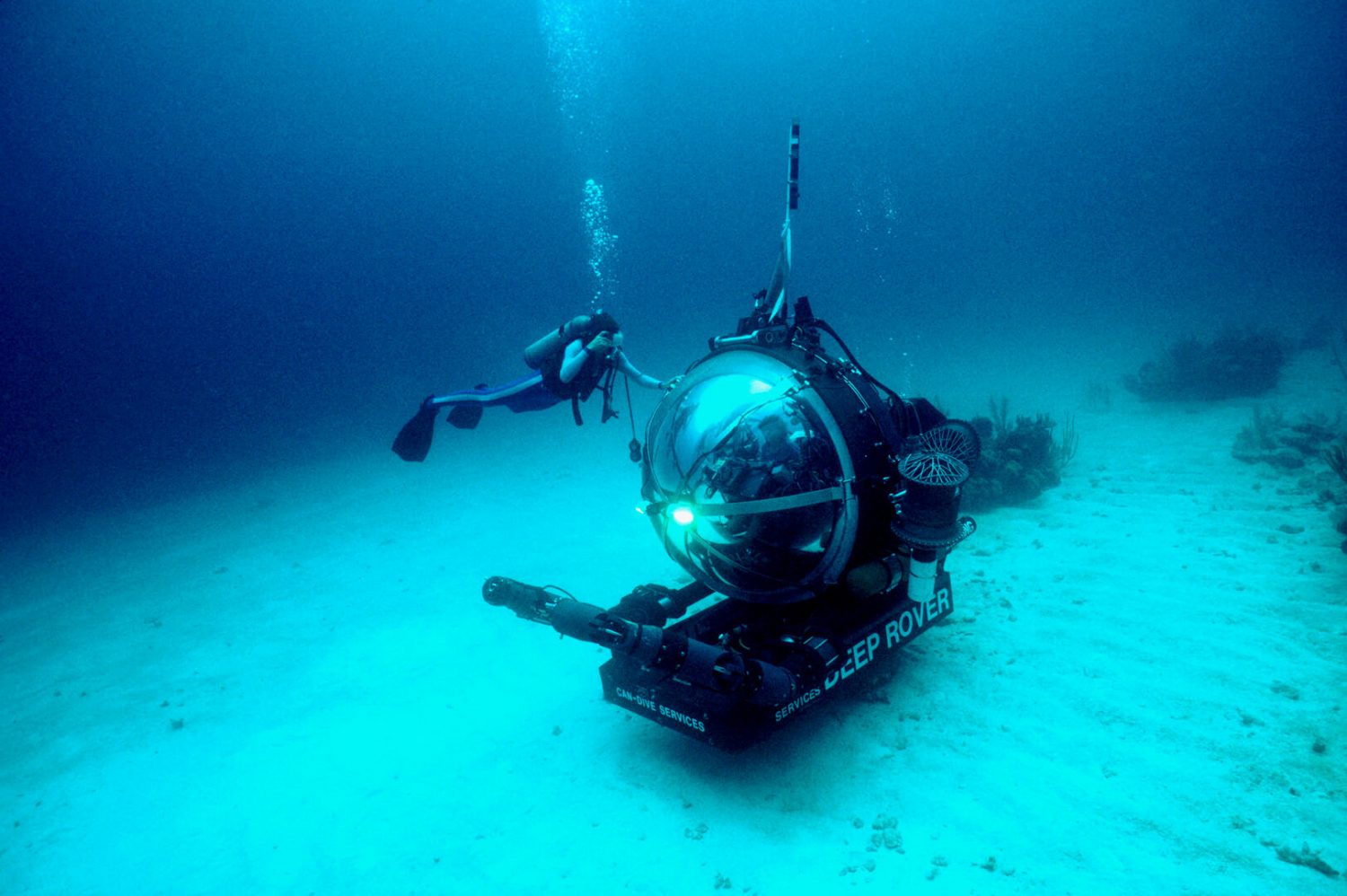
Whalebone: Can you recall the biggest failure in your life?
Dr. Earle: Oh goodness. Where do I start? I think every day I probably bump up against something that I experience as learning that if you don’t pick yourself up and try, try again you can become a victim to your own despair. I’ve been trying for years to inspire support for construction of a couple of little submarines, that we know how to build, that could be dedicated to exploration and research. And, by any standard I should’ve given up a long time ago. I mean, I’ve started now three companies, and in the first company we build submarines and in the third one, the one that my daughter and son-in-law now own and operate, I started it, but the dream remains to be able to improve access to sea by harnessing appropriate technologies to take us there. Hey, we can access it vicariously through remotely operated vehicles, and I’ve been involved with the development and build of several hundred remotely operated systems with cameras and manipulators and all that. Mindful, I’m not an engineer, but I facilitate the process and as a scientist know what needs to be done, and so I helped guide and shape and really polish in some ways the design of systems that might’ve turned out otherwise without the kind of input that I can give and that of others that we enlist as advisers.
So, I’m still working on this, even though I have had a hand in building several submersibles. I’ve been involved with leasing and using them for scientific projects and a five year project called Sustainable Sea Expedition with National Geographic, but I had to essentially borrow back or lease back a submarine that the company had sort of built and other submersibles that … it is possible to do what I want to do, I really want to cut through the process and have lots of little subs that are designed not just for tourism, but as working systems that are versatile and can be tuned for the purpose that you want to have and ultimately to go to the full ocean depth of 11,000 meters.
If you don’t pick yourself up and try, try again you can become a victim to your own despair.
So, I have had some success, but more failures or more setbacks than moving forward, but you cannot stop. My biggest failure is in terms of trying to make people understand why the ocean matters—why fish in the ocean are more than just commodities—that it contains whales and birds and other wild creatures that we’ve come to value for aesthetic reasons, for ethical reasons, for ecological reasons. But, we can’t seem to get over that line that says, “Oh, fish are delicious and we need to eat fish for food security,” which no matter how much I put it out there people still have convinced themselves we have to keep eating wildlife to help feed seven billion people. f that’s the case, then we’re in real trouble because we’re running out of fish and wildlife, and most of what is consumed is not really feeding the needs of people, although some island nations and coastal communities do rely on ocean wildlife for their sustenance.
I’ve sort of given up 1,000 times because—you have a success—but then people are going to do what they want to do despite the evidence. I just can’t give up and I won’t give up, because I can see the better place that we have to get to if we are to succeed as a civilization. We have to have greater respect for the natural world, for wildlife. We have to be able to explore and understand and communicate to a much broader audience than is now involved about why we must step back from the killing of the ocean systems that keep us alive. Fall down 1,000 times, get back up 1,001 times.
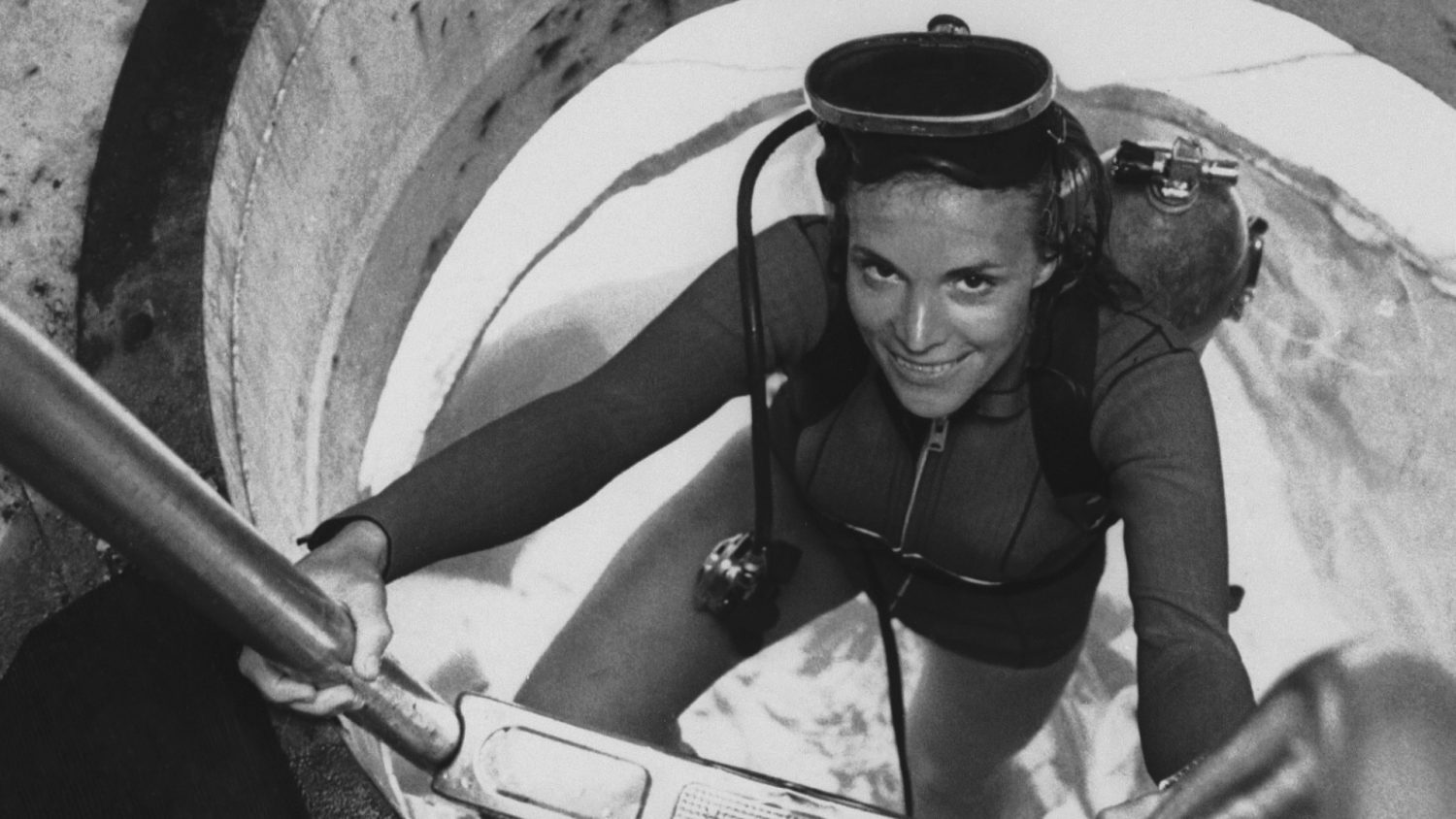
Whalebone: Can you describe the climate for female researchers and scientists in your field when your career started?
Dr. Earle: When I was selected as an aquanaut for Tektite project back in 1970, it didn’t even occur to me, that as a woman, I might be denied the opportunity. But, the application did not say you had to be a guy. They just said you had to be a scientist and know how to dive and show your credentials and develop a project that was meaningful. The proposals would be reviewed by a committee. So, I wasn’t alone, some other women applied to be participants. Because, well, even though there were no women astronauts at the time, they said to apply if you were interested, and I was interested and so I did.
But, when applications came in, the head of the program, James Miller—and he had to decide and from what I recall—is said to have said, “We can put up with a few women.” And that changed everything. It was his call in the end. And his call was, “Okay, we’re going to do this.” And they didn’t expect that we would be treated the same, we were told we couldn’t use the rebreather systems because they’re too heavy. So I just applied logic. The kind of breathing systems we would normally use were double tanks and I said, “Well, how much do they weigh?” And I was told, “Well, it’s about 65 pounds.” “So, how much do the rebreathers weigh?” “Oh, about 65 pounds.” So, it wasn’t because they were too heavy, it was because they just didn’t think women had the technological skills to figure it out. But, in the end they let us do it and we did use rebreathers.
And in the end, the men were a little bit put out, I suppose. There were 50 guys and just the six women in the course over the 10-month-long expedition and we got the ticker tape parade down State Street in Chicago with Mayor Daley in an open car, ticker tape scattered all around us, and we had a chance to be at the White House and make our case before congress about why the ocean mattered. So, we became, in a sense, spokesmen for the project and for the ocean and for the success of the scientific program as a whole.
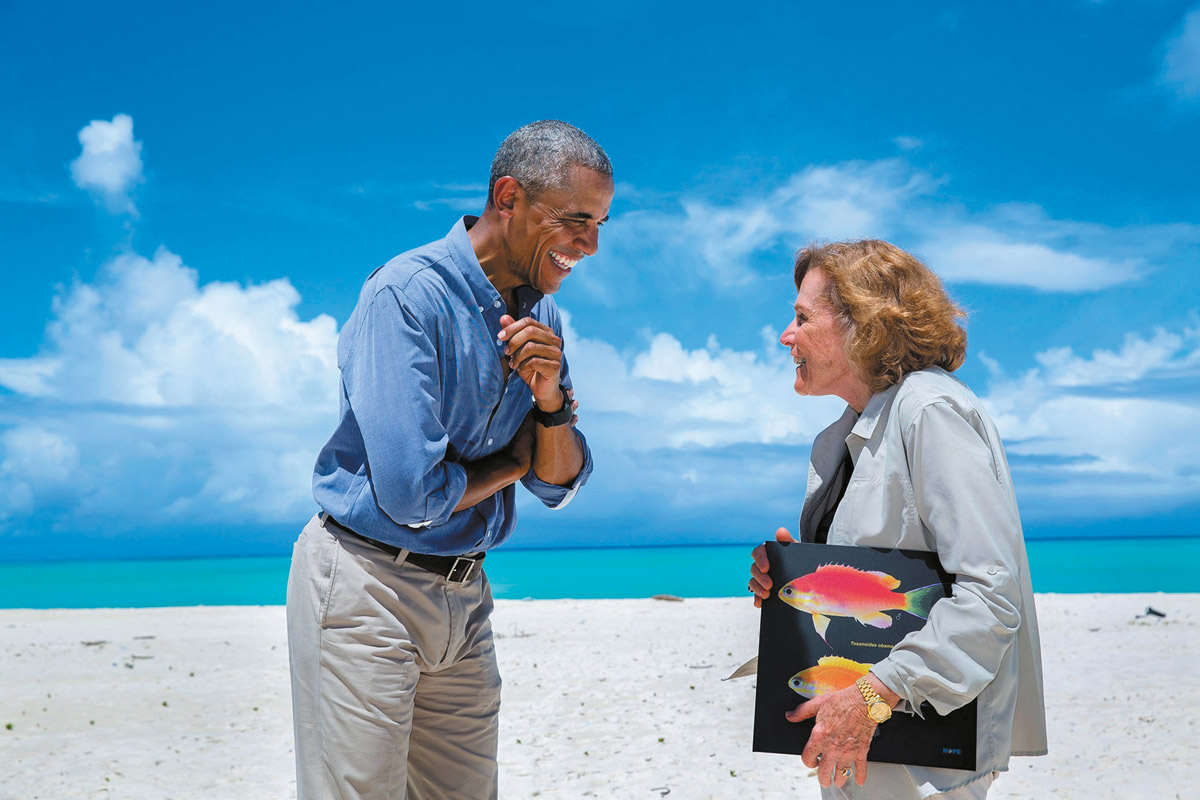
Whalebone: You’ve had the privilege of meeting, counseling, or encountering several Presidents of the United States over the years. If you had to bring one of them on a dive with you, who would you bring with you and why?
Dr. Earle: Oh goodness, good question. On one side of the political aisle, and one on the other side. I’d love to go diving with George W. Bush and I’d love to go diving, of course, with Barack Obama. And maybe together with them. Because I think they actually share a lot of common ground when it comes to the ethics of taking care of the systems that make life on earth possible. They might go about it in different ways, and during his administration, George W. Bush, was not one of the most beloved of conservation leaders. But, in the end, by establishing the largest marine protected area on the planet at the time, he certainly won a lot of hearts and minds and he did it for the right reasons. It was not politically advantageous to him. He did it because he saw that it was the right thing to do and the right time to do it.
And I think he listens. He listens. He doesn’t just blow you off as somebody who’s there to get a favor. The encounter that we had was dinner for six people and just by chance I landed at the table for six that included President Bush. And, we had an hour and a half to discuss the topic at hand, which was the northwest Hawaiian Islands as a potential marine sanctuary or, as it turns out, a national monument.
I won’t give up, because I can see the better place that we have to get to if we are to succeed as a civilization.
But, the mindset at the time was, okay maybe we will, maybe we won’t make it a marine sanctuary. But, over the course of that hour and a half of discussion where he learned that 90% of many of the big fish, including those he likes to occasionally catch, like grouper and tuna and things, were gone. He had his mind focused on other things like wars, and the economy, and things, but he did listen. The knowledge had been there, but it was just not available in his everyday thinking. He did not know that the areas designated as marine sanctuaries were more like national parks, so you can make this area under consideration a national marine sanctuary, but you still wouldn’t protect the fish. They would be about as protected inside and outside with the same laws, but no special protection. And the point that I think I remember hearing myself saying was, “If there are to be fishermen, Mr. President, there have to be fish.” Big duh moment. But, if there are to be fish, you have to think like a fish. What does a fish need to proposer? You need feeding areas. You need breeding areas. Right now, even now after years beyond what President Bush did, it’s still only about 3% of the ocean that is protected from the taking of fish. If you add managed areas including our marine sanctuaries, it’s about 7% of the ocean and the United Nations is aiming for 10% by 2020, with large support internationally for 30% by 2030. And so, we’re getting there, I guess, is the point.
Why would I want to get President Obama and President Bush together? Well, they both took action for the same area, but President Obama quadrupled the size of what Bush did. And why? Simply because he could and because a strong case was made to take that area that was 50 miles out and expand it out 200 miles with large scientific and popular support.
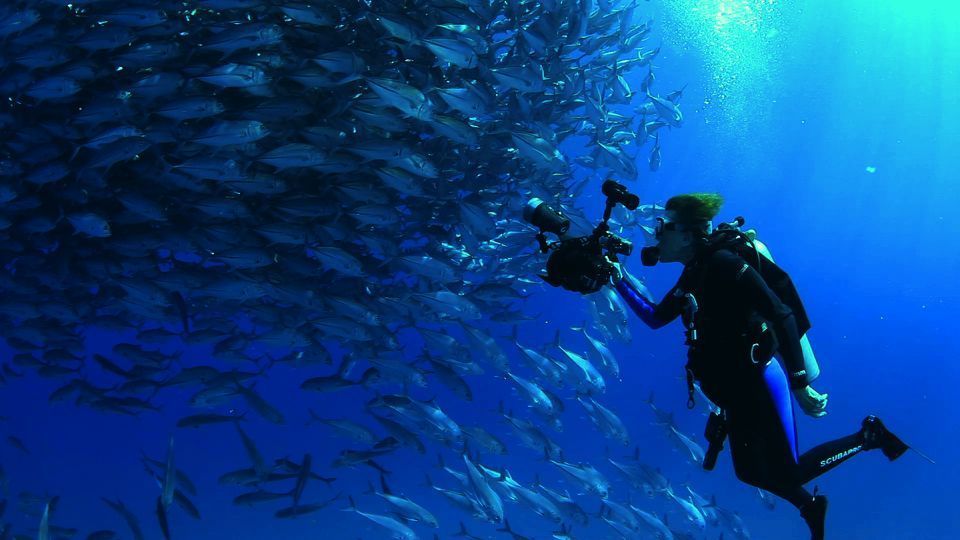
Whalebone: What would be your favorite movie of all time? Generic, we know, but you’ve likely seen a few.
Dr. Earle: I am smitten by Blue Planet II, the BBC news series. I think, not only did they show how beautiful and important the ocean is, it bored right down into the personality of fish, and they took time as they had not before in the first Blue Planet or Life on Earth to show that things are at risk right now. They really are. I mean, I could say my favorite one is Sea of Hope, which is a National Geographic production, where I was able to go with some kids around the coastline in this country and look at the nature of what’s going on. So, if I could have two that really have helped change my life and I think everybody should go see them, those would be the two I would say.
Whalebone: The one biggest milestone that you’ve seen happen in your life time for protection and support of the ocean?
Dr. Earle: Biggest milestone would easily be the breakthrough in terms of developing the concept of blue parks to compliment green parks. The conservation movement has largely been focused on the land and my response to that is “No blue, no green.” You’ve got to take care of the ocean or nothing else matters. I mean truly when you come right down to the basics. If we fail to take care of the ocean and respect the way it operates and protect the basic functioning of our life support system, none of the other things we do work, as important as they may be as pieces of the puzzle. We will fail if we don’t respect the ocean. And whether we’re talking climate change or pollution issues or extracting wildlife out of the natural world, if you like to breathe, you’ll thank the ocean, because that’s where most of the oxygen is generated, by life in the sea. And carbon dioxide, considering the process of generating oxygen and photosynthesis, those little green and blue green, those photosynthetic organisms are capturing carbon. And where does the carbon on the planet get stored, it’s mostly sequestered in the deep sea.
And we are just beginning to not just understand, which is fundamental because you can’t care if you don’t know, but really apply it to policies that heretofore have not taken this into account. And it’s never more obvious than when it comes to policies about fishing and this ongoing talk about sustainable fishing. Sustainable extraction of wildlife from the sea on a large scale to feed large numbers of people can’t work. It just cannot. And the evidence is staring us in the face. The sharp decline, despite our efforts to find that sweet spot of how many can we take and get away with it. Well whatever it is, it’s a whole lot less than what we’ve been doing.
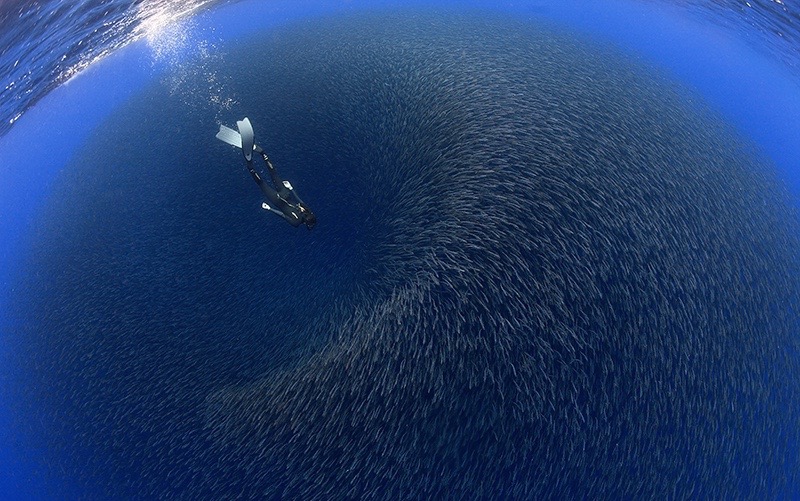
Whalebone: What piece of advice would you provide someone reading this interview on ways they can get involved and be an agent of change?
Dr. Earle: Just be like a kid and ask questions all the time, ask questions. When you see a fish on your plate, or in the store, you say, “Well, who is this? Where’d it come from? What’s it been eating? How far did it have to travel to get to where I am standing or sitting? And how old is it?” If people would start asking questions, they might start pushing their plates away. And also, trying to have the mindfulness to allow the ability to get outside your own skin and when you’re talking to another human being or encountering a shark or a whale or a lobster, it’s just that moment of trying to imagine the world from their perspective and thinking the golden rule, “Do unto others as you’d have them do onto you.”
Whalebone: One place you would recommend that everyone go on a dive or snorkel in their lifetime?
Dr. Earle: I’d like to say, go deep in the ocean, because that’s where there are more new discoveries we’re going to find. But, look at the list of Hope Spots. They’re about 100 places that have been identified as special places on the planet and actually any place on the planet, all the planet is one big hope spot, mostly blue. But the idea is to look at it with seeing eyes. Look at it with humility, look at it with whatever it is, a sense of wonder. You can look at a leaf and wonder what the heck is going on in there and maybe borrow a microscope or get someone to show you what happens inside of a leaf. You don’t have to go to Palau, although Palau is fantastic destination to see reef, sharks, deep water, and nautilus swimming by and you get to go deep. And you can go to the Bahamas, go to Bermuda, go to the Florida Keys, go the coast of California and dive into a kelp forest. Go meet the fish that appear on your plate and say, “Oh, oh I didn’t know you were so beautiful. All I have seen of you is headless, tailless, brown-butter-lemon-sliced body of you, but you’re an amazing creature. I would never want to hurt you.”
I think better than traveling far, far away sometimes, it’s best to pick up the mirror and look in the mirror and say, “Okay, who are you, whoever you are? And what do you care about, what are your talents, whatever they are?” Everybody has some, everybody has one or more potential or real super powers. You could do something nobody else could do because everyone is different. And everyone can do something no one else can do. What is it? And use it.

